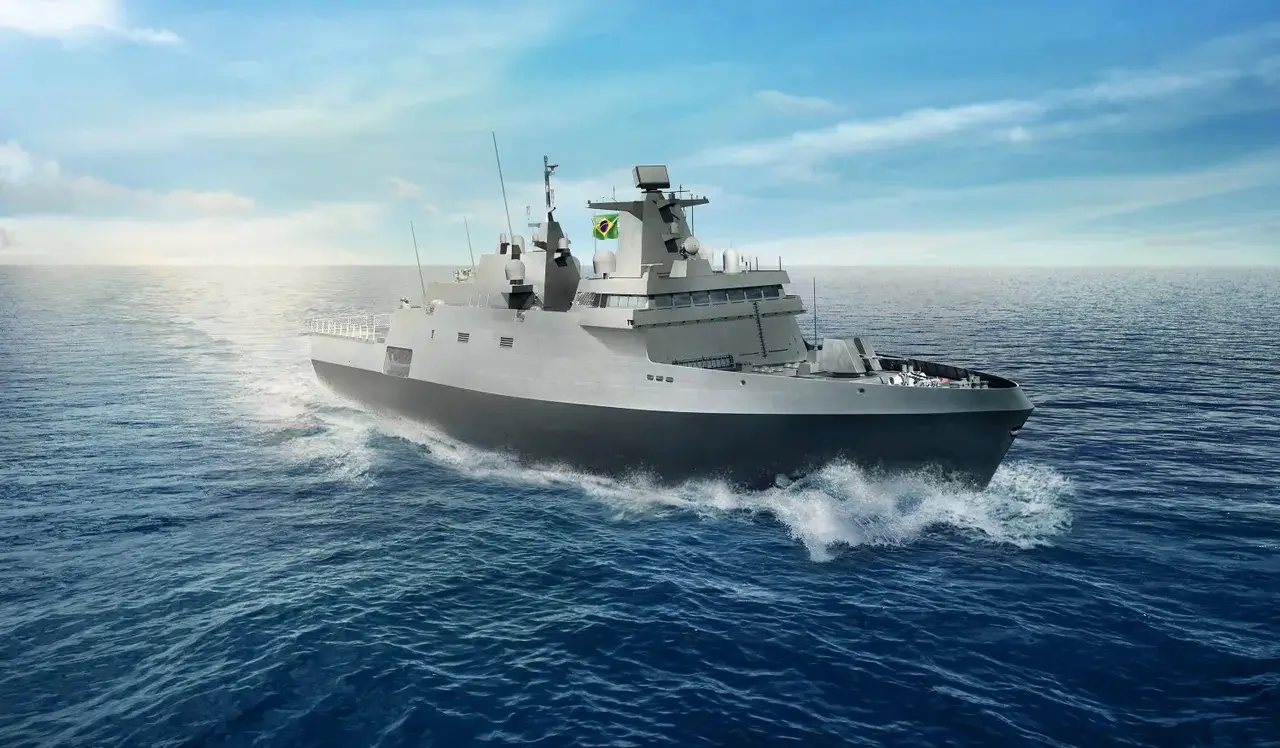In a momentous steel-cutting ceremony held on November 1 at the Estaleiro Brasil Sul shipyard, owned by thyssenkrupp Marine Systems in Itajaí, the Brazilian Navy solidified its commitment to advancing its naval capabilities with the construction launch of the frigate Jerônimo de Albuquerque (F 201), a pivotal member of the Tamandaré class. The Jerônimo de Albuquerque marks the second of six Tamandaré-class frigates commissioned by the Marinha do Brasil. To bring this ambitious project to life, the collaborative consortium Águas Azuis, now comprising thyssenkrupp Marine Systems, Embraer Defense & Security, and Atech, has taken the reins. This substantial procurement program, known as PROSUPER, set sail in 2017 with firms from 17 countries vying for involvement. After meticulous evaluation, a shortlist of four international consortia emerged on October 15. The winning bid was clinched by the esteemed German shipbuilding conglomerate tKMS, propounding a design rooted in the MEKO A-100 variant known as BR. The triumphant announcement came on March 28, 2019, leading to the eventual signing of the 2 billion EUR contract on March 6, 2020.

The Tamandaré class stands as a beacon for future stealth guided-missile frigates within the Brazilian Navy, drawing its lineage from the esteemed MEKO family of ships. This visionary project, a collaborative endeavor between the Ministry of Defence and the Águas Azuis consortium, spearheaded by ThyssenKrupp Marine Systems (TKMS) and Embraer Defense & Security, commenced construction on the four planned frigates in 2022. These vessels are projected to be delivered between 2024 and 2028. These frigates, beyond replacing aging fleet assets, are designed to fortify the protection of the Blue Amazon, an expansive and resource-abundant region encompassing about 4.5 million square kilometers off the Brazilian coast. Their multifaceted roles include conducting search and rescue operations and fulfilling international commitments, among other critical tasks, as stipulated by the Brazilian Navy through the Directorate of Program Management of the Navy (DGePM) and the Naval Projects Management Company (EMGEPRON).
The stringent project specifications demanded a unit price falling within the €400–500 million bracket, incorporating a formidable array of armaments. This includes the OTO Melara 76 mm main gun, a minimum of eight VLS Sea Ceptor CAMM missile cells, a Rheinmetall Sea Snake 30 mm machine gun, two .50 machine guns, two triple Mark 46 anti-submarine torpedo launchers, and two twin anti-ship missile launchers for the MANSUP missile. Moreover, the vessels are equipped with a propulsion system for diesel engines and a hangar capable of housing a SH-60 Seahawk, Super Lynx Mk.21B, or Eurocopter EC725. The winning consortium is entrusted not only with constructing the four ships in Brazil but also with transferring 100% of the project’s technology (ToT) to the Brazilian Navy. The Águas Azuis consortium, led by ThyssenKrupp Marine Systems, presented a proposal amplifying the original MEKO A-100 corvette design. This project involved tonnage extension from 2,000 to 3,500 tons, increased vessel length, and the incorporation of cutting-edge systems like the Hensoldt TRS-4D AESA radar, enhancing the ship’s capabilities for traversing the tumultuous South Atlantic.
TKMS also pledged offsets to the Brazilian Navy, including the remotorization of the Tupi-class submarines previously constructed by the company in the 1980s and 1990s. Atech, an Embraer Group company, secures its role as the supplier of the CMS (Combat Management System) and IPMS (Integrated Platform Management System), critical components integral to the frigates’ functionality. The winning bid’s alignment with the MEKO A-200 frigate class and its adaptable modular construction system promises versatility for future updates, ensuring that these frigates stand resilient amidst evolving naval demands.As the Brazilian Navy continues its strategic maneuvers towards modernization and enhanced operational prowess, the launch of the Jerônimo de Albuquerque stands as a testament to the nation’s commitment to maritime security and technological advancement.















